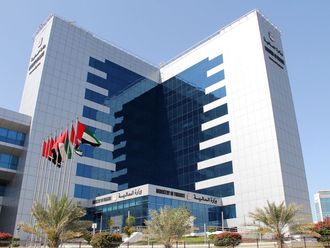Dubai: Despite ongoing, rapid growth in the Sharia-compliant insurance (takaful) markets, Standard & Poor's said operational issues within the industry will be a major constraint on the sector.
S&P believes that while the essential Sharia-compliant operational model requires further corporate governance, particularly so in those domiciles where corporate governance is poorly established, often the Sharia interpretation creates a more complex, and therefore inefficient, operational model compared with conventional insurance companies.
Kevin Willis, an analyst with S&P, said: "Since conventional companies employ tried and tested systems, are typically long established and have larger business volumes, they deliver better economies of scale that some takaful companies are struggling to achieve.
Difficulties
"We believe this is creating some difficulties for both takaful fund members and investors.
In December 2010, the Islamic Financial Standards Board published IFSB 11: Standard on Solvency Requirements for Takaful (Islamic Insurance) Undertakings, while the Auditing amd Accounting Organisation for Islamic Financial Institutions (AAOIFI) standards also cover the application and interpretation of Sharia law for the takaful sector.
In a sector where scholarly interpretation of religious texts is essential, but can differ widely, S&P said it welcomes the introduction of a more consistent framework for reporting and controlling takaful companies.
The variety of interpretations of Sharia law within the takaful sector is causing material inconsistency in the published accounting information.
Fund surpluses
S&P has voiced some concerns about the management of fund surpluses.
AAOIFI proposes that takaful fund surpluses can only be distributed to the managers of the takaful fund — not to members and investors in the company.
S&P observed that there are concerns that this ruling creates a real moral hazard for both the fund members and the shareholders.
As an example, for certain types of underwriting risk, claims development can happen over many years, and it is conceivable that a fund that is in surplus for years one to four can turn into deficit in year five.
Questions
"Questions that arise from this ruling are: if those surpluses are distributed prematurely to the management team, are they subsequently recoverable from that team? Or is it the responsibility of the current/new members to restore the health of the takaful fund?," David Anthony, an analyst with S&P, said.
Despite the operational constraints highlighted, analysts said they expect the takaful industry to grow rapidly relative to the conventional insurance market and become increasingly meaningful in overall scale in its target domiciles.
Global takaful contributions are expected to reach $12 billion (Dh44.04 billion) by the end of this year and reach $25 billion by 2015, according to Ernst and Young's World Takaful Report 2011 released recently.
Total takaful premiums amounted to $9.15 billion last year.
The takaful industry is concentrated mainly in the Middle East and North Africa (Mena) and South East Asia, with Saudi Arabia contributions totalling $3.86 billion in 2009, Malaysia with $1.15 billion and the UAE with $640 million being the top three takaful markets.












